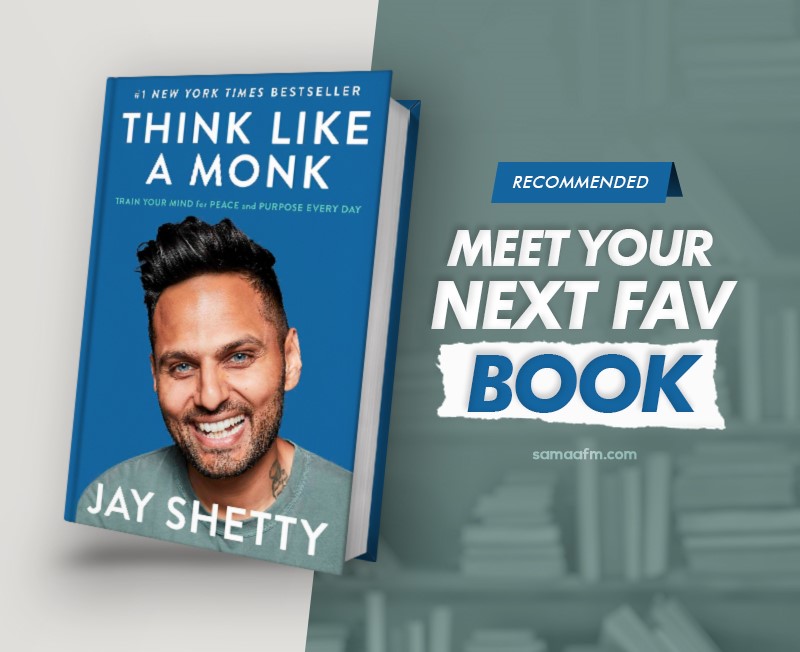
Book Review: Think Like a Monk by Jay Shetty
- posted by: Abdul Latif Dadabhouy
- No Comments
Who is Jay Shetty?
Jay Shetty is a host, viral content producer, motivational speaker, and author who has won several awards. Jay started his YouTube channel in 2016 with the goal of sharing wisdom videos. He now has over 20 million followers worldwide and has had over four billion views on YouTube in only four years. In addition, Jay was selected to Forbes’ 30 Under 30 list.
Jay Shetty’s Inspiration behind the book Think Like a Monk?
When Jay was 18 years old, he met a monk who transformed his life. Jay began to redefine success for himself, and he desired to help others. He spent three years as a monk traveling around India and Europe when he was 22 years old. He used to get up at 4 a.m. every day, take cold baths, meditate, and eat. He would meditate for 4 to 8 hours each day. Jay would devote half of his day to personal development and the other half to assisting others. He has now reintegrated into society. He does, however, want to assist individuals in adapting the monastic attitude to modern city life.
Book Review Think Like a Monk by Jay Shetty
The book Think Like a Monk combines deep wisdom with Jay Shetty’s personal experiences. The goal of this book is to assist people in adopting a monk attitude in their daily life. ‘Think Like a Monk’ teaches you how to overcome negative ideas, reach calm, and create meaningful purpose in order to realize your full potential. It might be difficult to adapt monks’ lessons to modern life. Shetty, on the other hand, offers tips and exercises for reducing stress, improving self-discipline and attention, and maintaining relationships in today’s society.
How to live life peacefully
The book successfully lays out a route for living a more peaceful and fulfilled life. Furthermore, it is organized into three sections: Let Go (Identity, Negativity, Fear, and Intention), Grow (Purpose, Routine, The Mind, and Ego), and Give (Gratitude, Relationships, and Service).
Monk mind and Monkey mind
Moreover, Jay also highlights the obvious difference between the monk and monkey mind. A monkey mind is one that overthinks and procrastinates, is easily sidetracked by trivial matters, craves immediate satisfaction, is demanding and entitled, is self-centered and preoccupied with multitasking, and is ruled by anger, worry, and fear.
Jay also discusses many unique concepts such as mental traumas, quadrants of potential, the circle of love, double-edged ego, chariot of the mind, and so on.
Fear, attachment, and control
Fear stems from a preoccupation with attachment and control, according to Shetty. As a result, detachment is the antidote to fear. Detachment isn’t about owning nothing; it’s about owning nothing. Detachment does not imply indifference to life and the things that surround you. Instead, you should refrain from allowing items to influence your judgments. These are known as “preferred indifferents.” It’s fine if you choose to have these things in your life. To be happy, though, you do not require these things.
In the end, Passion is one of the most important characteristics of successful activities. As a result, Shetty advises readers to figure out what their passions are. These hobbies should be ones in which you have a natural skill and enjoy.
RECOMMENDED BOOKS
If you like this Book review you can also check these
FAQ
Jay began redefining success for himself after meeting a monk when he was 18 years old. He travelled to live as a monk in India and Europe after graduating with a 1st class BSc (Hons) Degree in Behavioral Science from Cass Business School, inspired to make a difference in the world.
Jay Shetty (born September 6, 1987) is an Indian-born English novelist, former Hindu monk, and life coach.
As a young guy, he developed the following habits: He left London at the age of 19 to become a monk in an ashram in India. At that young age, he had suddenly recognized that he was seeking something other than achievement or worldly prosperity in life.
They participate in community activities like Mass, prayer, meditation, and service. They also engage in activities that distinguish them, such as exercise, collecting, composition, and cooking.





